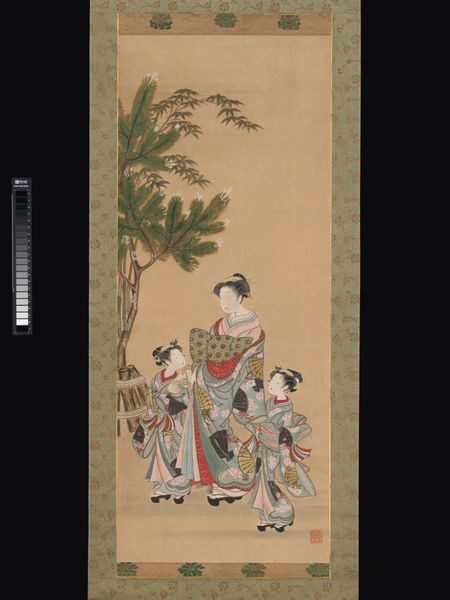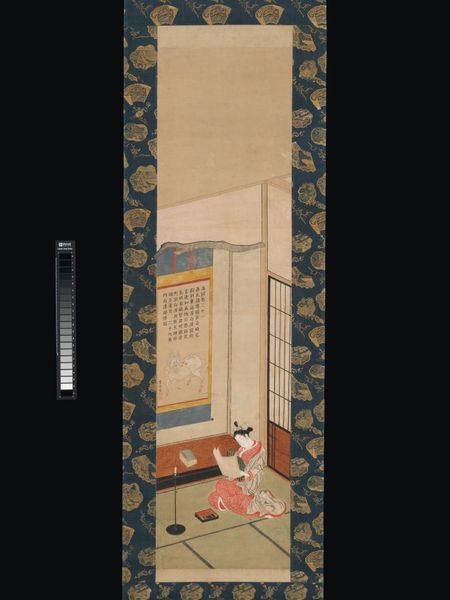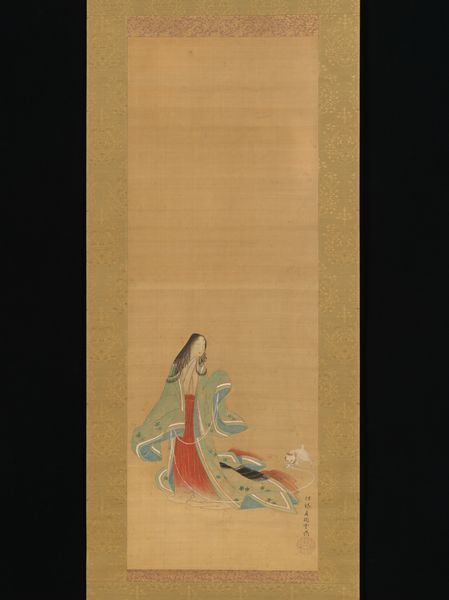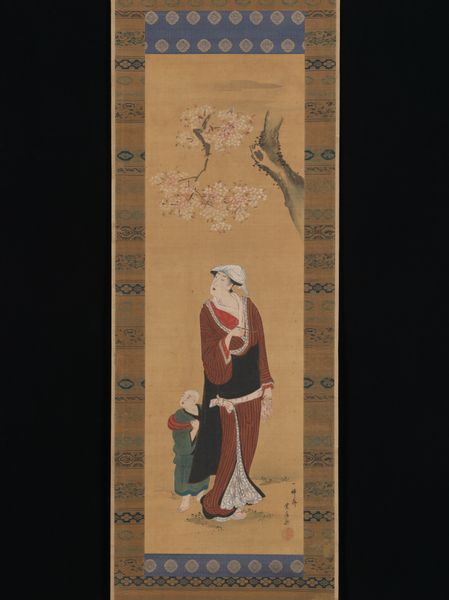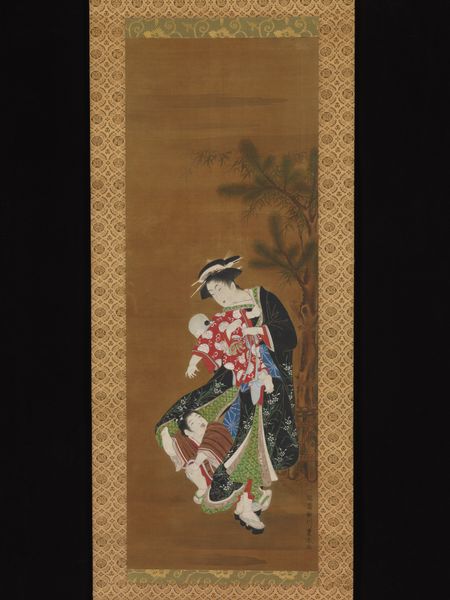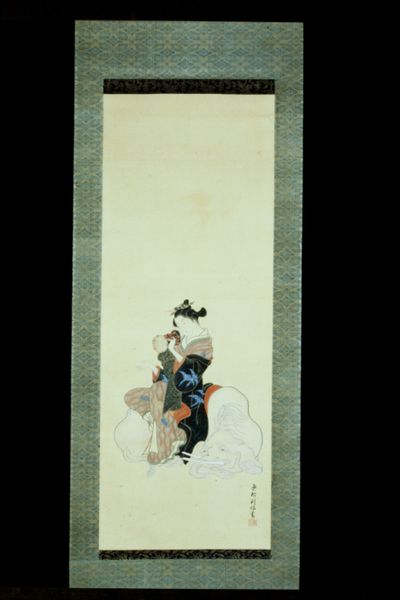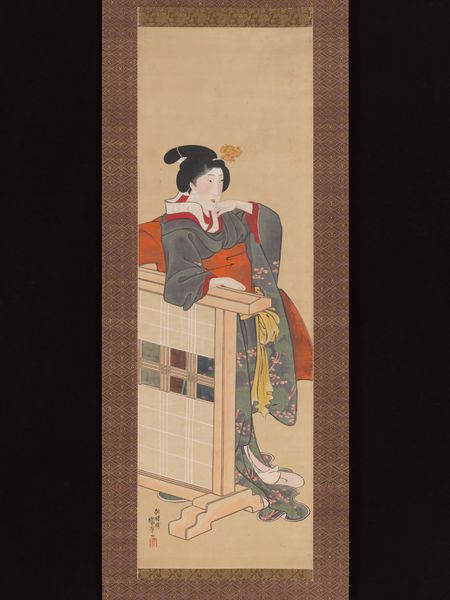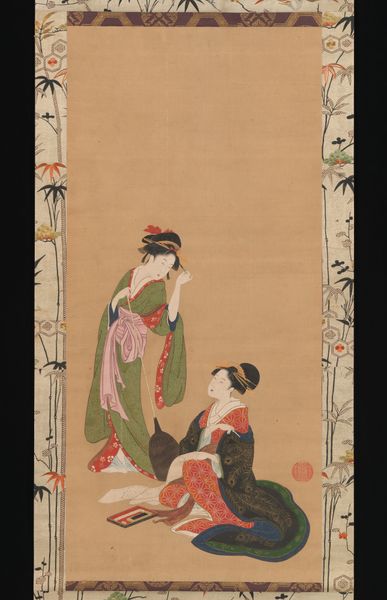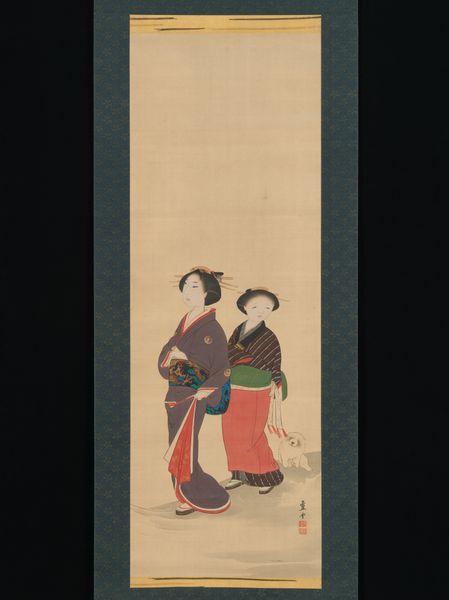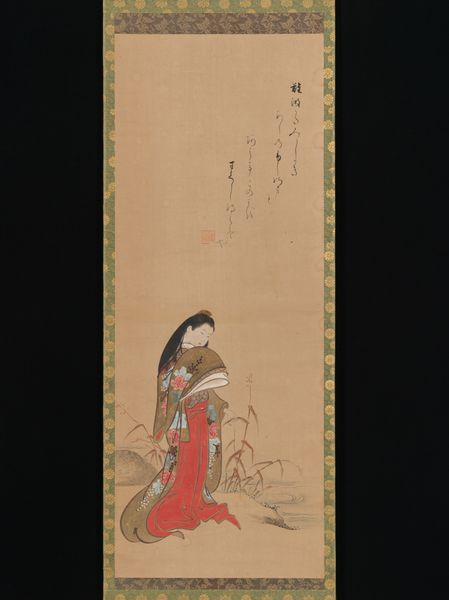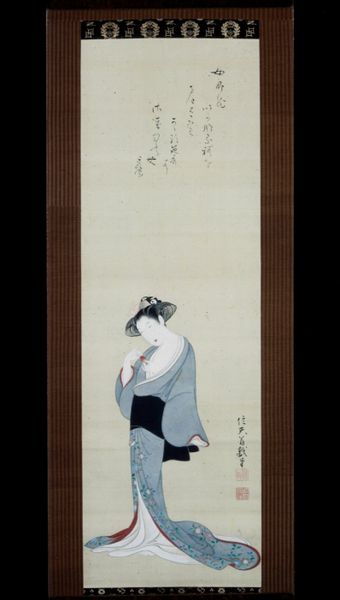
tempera
#
portrait
#
tempera
#
asian-art
#
landscape
#
ukiyo-e
#
folk art
#
figuration
Dimensions: Image: 31 9/16 × 11 3/16 in. (80.2 × 28.4 cm) Overall with mounting: 63 3/8 × 15 5/8 in. (161 × 39.7 cm) Overall with knobs: 63 3/8 × 17 15/16 in. (161 × 45.5 cm)
Copyright: Public Domain
Curator: Welcome. We're standing before "The Brine Maiden Matsukaze," a tempera on silk attributed to Nishimura Shigenobu, dating to sometime between 1700 and 1733. Editor: It has a wonderfully muted palette. Something about it evokes a sense of melancholy, doesn't it? The seated woman seems burdened by an unseen weight. Curator: Notice how Shigenobu masterfully uses line and form to direct our eye. The delicate brushstrokes articulate the folds of her kimono, and the overall composition creates a sophisticated rhythm within the frame. We could also consider it in terms of "Ukiyo-e", translated as pictures of the floating world. Editor: And within that world, it is crucial to recognise this as more than just a depiction of female form. It's an engagement with themes of exile and longing. Matsukaze was an ama diver, a woman who harvested seaweed, later associated with a classical play about two sisters exiled for making salt. She sits, clinging to a pine tree that reminds her of her lost lover. The artwork becomes a potent symbol of loss experienced by those on the margins. Curator: While I concur regarding its poignant subject matter, the technical precision with which Shigenobu handles the medium shouldn’t be ignored. The layering of colours to achieve depth, the nuanced depiction of textures – silk, pine bark – these are triumphs of visual representation in their own right. I read it less as a polemic and more as formal triumph. Editor: Precisely, art of this era often subtly commented on socio-political issues. The seeming calm of the composition is actually layered with subversive undertones when read through the history of gendered labour, the burden of emotional lives lived outside conventional society. The gentle medium belies sharp commentary. Curator: An insightful analysis. It appears Shigenobu crafted a complex visual puzzle which blends stylistic form with social commentary. Editor: It just illustrates, once again, how Japanese art can function as both an aesthetic achievement and powerful record of women, love and social struggles.
Comments
No comments
Be the first to comment and join the conversation on the ultimate creative platform.
